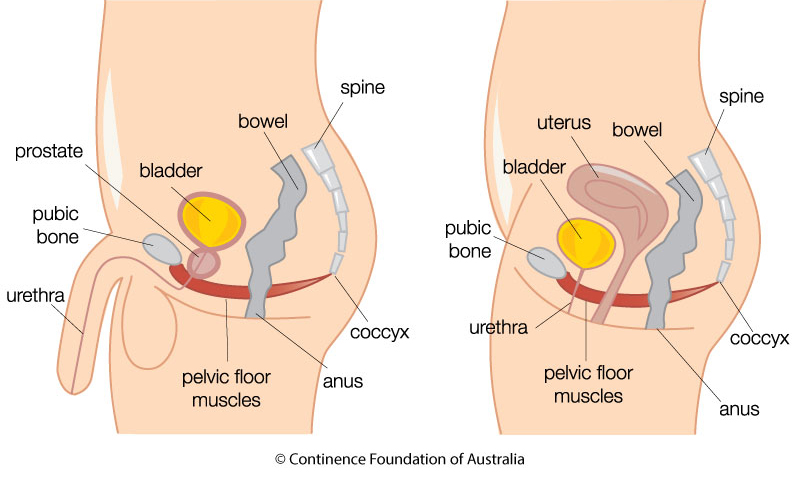Strengthening your pelvic floor muscles is essential for overall wellbeing. In women, pelvic floor muscle exercise can help strengthen the core, improves circulation, and promotes reproductive health. But what are pelvic floor muscle exercises? Keep reading below!
What are the pelvic floor muscles?
The pelvic floor muscle serves as the foundation of your core. They work closely with your deep abdominal muscles, back muscles, and diaphragm to support the spine. They make up a hammock-like structure, and they run from the front of the pubic bone to the tailbone, and from one sitting bone to the other.
For women, most especially, the pelvic floor muscles are essential for reproductive health. In women of reproductive age, strengthening your pelvic muscles can help improve sexual health, arousal, and pleasure.
For everyday exercisers and professional athletes, having a strong pelvic floor can help give your core muscles the additional support it needs in a variety of exercise modalities (particularly yoga and Pilates), and in sports. In fact, the pelvic floor muscles in yoga are often referred to as the mula bandha.
For aspiring moms or expectant moms, strengthening and opening your pelvic floor muscles can help better prepare your body for childbirth. Having strong pelvic floor muscles can help support the weight of a growing fetus, but they also have to be open enough to help release and push out the baby during the birthing process.

What happens to the pelvic floor muscles after childbirth?
Your pelvic floor muscles stretch during pregnancy, and will weaken after you give birth. It is recommended that six-weeks postpartum should be dedicated to restrengthening your pelvic floor muscles.

However, if you underwent a Caesarean delivery or any kind of abdominal surgery for that matter, your recovery process might take longer. This is because abdominal surgery tears through your natural musculature, and you may lose the capacity to engage or even feel any sensation in youre core muscles.
Do work with your obstetrician-gynecologist, especially when it comes to monitoring your body post-surgery. Should they give you clearance to exercise within 6 or more months after surgery, consider including pelvic floor muscle exercises in your workout regimen.

What happens to your pelvic floor muscles as you age?
Depending on your fitness level, you may lose control of your pelvic floor muscles as you age. Changes in your hormones can weaken your pelvic floor, and the fascia and tissues that help support these muscles can also tighten up and have less mobility.

This may lead to urinary or bowel incontinence. Again, work with your physician as to what options you can do to improve bladder and bowel health. However, do know that regularly exercising your pelvic floor muscles can greatly help with this.
What are pelvic floor muscle exercises?
Exercising your pelvic floor muscles is simple. Here’s how you can do it:
1. Find a comfortable seated or supine position.
You can perform pelvic floor muscles standing up, but you can better isolate them if you begin seated or lying down. You can sit on the floor with your shins crossed, or with your heels underneath your hips.
If you would like to, you can also sit against the wall with your knees wide apart and the soles of your feet on the floor.
You can also simply lie down with your knees bent and soles of the feet flat on the mat.

2. Locate your pelvic floor muscles
In women, accessing your pelvic floor muscles simply means “holding your pee in.” Try to do it now. Notice if you end up engaging your low belly or your glutes. Instead, try to isolate the sensation in your vagina and all the way up to your anus.
Isolating these muscles may take a lot of practice, so be patient and just practice!
3. Contract and relax your pelvic floor.
Once you’ve located your pelvic floor muscles, alternate between squeezing and releasing. Squeeze the pelvic floor muscles up and in, then release and relax. Do these for a total of 8 reps, or as many steady, controlled reps as you can for a minute.
Try to practice these pelvic floor muscles every day. You can simply practice for as short as a few seconds to a few minutes, or incorporate them in your daily workout program. Enjoy and Happy Women’s Month!




